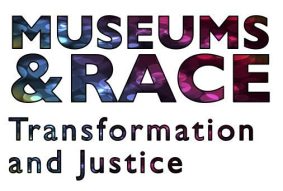Coming to recognize and understand entrenched racism is a difficult and potentially contentious undertaking—but also a necessary step in challenging and transforming the institutional policies and systems that perpetuate structural racism and oppression in museums. To help advance this work, a group of 24 museum professionals came together in Chicago for a three-day convening on race and racism in museums.
The idea for the convening—called Museums and Race: Transformation and Justice—grew out of a conversation about museum response to Ferguson that The Museum Group (TMG) hosted during the American Alliance of Museums meeting in Atlanta in April 2015. People there were determined to sustain the momentum, and so a planning team was organized to develop the Chicago convening, with TMG as sponsor.
In small groups and larger discussions, over meals and in the convening lounge, our conversations centered on how to shape, expand, continue this critical dialogue so that it involves many others across the country and in all types of museums. We came from a variety of ethnic, racial, and cultural backgrounds, age groups, career stages, and museum environments, and that variety made for rich and frank exchange. “I am very appreciative of the thoughtful and intense conversations with individuals and within the group, the commitment to the work, the shared resources, the poems, the chocolate, donuts, biscuits, and cake,” said one participant. “I am looking forward to including others to expand the group and spread the word.”
Here’s what a few other participants had to say about the value of the convening:
- Professional practice, scholarship, and museums of color are largely not known by our colleagues. It is important to acknowledge and build on that.
- There is an urgent need for white museum professionals to address their privilege and role in oppressive systems. People of color bear a large burden when their white colleagues expect them to raise their awareness of racism and oppression.
- The potential impact of addressing privilege and oppression in spaces where museum professionals assemble (such as association meetings) is great. It can also be a strategic way to affect awareness raising in our white/largely white institutions.
- [The most valuable part for me was] becoming connected with strong, leading thinkers and practitioners in the field. It was reinforcing to know people are doing active work to raise consciousness in matters of racial and intersectional issues and also to see their action to change the way museums think, act, and behave.
- It is critical to meet people where they are in their process. Most valuable was the honesty from which people spoke and that people were very generous. Although some of the conversations were hard, it felt like a safe space for all.
Learn more about other participants’ reactions to their convening experience. Listen to Omar Eaton-Martinez, Daryl Fischer, Porchia Moore, and Brenda Tindal reflect on the convening on the February 16 episode of The Museum Life with Carol Bossert.
Taking Action
The convening was not a one-time event, but another step toward building coalitions and partnerships to carry the work forward. Participants initiated immediate and longer-term plans to broaden involvement and galvanize individual and collective action, beginning with a day of sessions on museums and race in TMG’s unconference space on the first day of the American Alliance of Museums annual meeting May 26–29, 2016, in Washington, DC, and fanning out across the country to fall and winter annual conferences of regional museum associations and other professional organizations.
On the convening’s final afternoon, small groups identified three action areas:
- Research, Resources (Materials), Metrics, and Accountability
- Social Action and Intervention
- Influencing AAM and Other Professional Organizations
Mindful of the need to inspire participation, one participant observed that “the enormity of the work still exists. We are a small group who is willing. The proof will remain in how well we do at sustaining the energy and translating it to action.” To help shape the dialogue, generate action, and influence change, join the conversation by sharing your thoughts here or by contacting us.
Learn more about Museums & Race:
